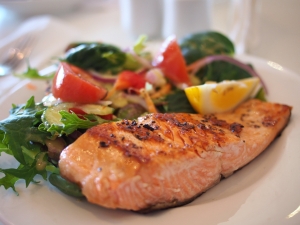This article, written by Dr Brett Glencross, was published in the April 2025 edition of International Aquafeed
 As the global demand for sustainable food sources grows, among proteins, salmon farming is increasingly hailed as an eco-friendly alternative. With a carbon footprint of approximately 4 kg of CO₂-equivalent (CO₂e) per kilogram of edible product, farmed salmon is considerably less carbon-intensive than beef, which emits a staggering 30 kg CO₂e per kilogram, pork at 12 kg CO₂e per kilogram or even chicken at 6.5 kg CO₂e per kilogram [DOI: 10.1126/science.aaq021]. Yet, while salmon farming appears to be a greener choice at first glance, a closer look reveals complexities that deserve scrutiny.
As the global demand for sustainable food sources grows, among proteins, salmon farming is increasingly hailed as an eco-friendly alternative. With a carbon footprint of approximately 4 kg of CO₂-equivalent (CO₂e) per kilogram of edible product, farmed salmon is considerably less carbon-intensive than beef, which emits a staggering 30 kg CO₂e per kilogram, pork at 12 kg CO₂e per kilogram or even chicken at 6.5 kg CO₂e per kilogram [DOI: 10.1126/science.aaq021]. Yet, while salmon farming appears to be a greener choice at first glance, a closer look reveals complexities that deserve scrutiny.
Compared to livestock farming, aquaculture offers significant environmental advantages. Firstly, salmon are cold-blooded, which means they use less energy (food) to regulate body temperature. This lack of a need to burn energy to regulate body temperature means they are highly efficient in feed conversion, meaning they require less food to produce the same amount of protein as land animals. For context, beef cattle require roughly 25 kg of feed to produce 1 kg of meat, while salmon need only about 1.3 kg of feed for the same output. Not only that, but salmon is typically 60% edible mass, compared to 30% to 40% for land animals.
Additionally, salmon farming doesn't demand vast tracts of land, which causes widespread habitat destruction and deforestation—a major source of greenhouse gas emissions in cattle and pig farming. Methane emissions, a potent greenhouse gas primarily associated with ruminants, like cows and sheep, are virtually non-existent in aquaculture. Additionally, a lower level of agriculture reliance means that aquaculture has a considerably lower biodiversity impact. The International Union for Conservation of Nature (IUCN) have recognised that the greatest biodiversity threats we face are those in terrestrial freshwater, forest and grassland systems that have been cleared, sprayed and poisoned with pesticides to all but eliminate biodiversity in the name of food production. Recent studies show that agriculture poses much greater threats to biodiversity than fishing [DOI: 10.1093/icesjms/fsad115]. Even those vegan burgers we get told that are so good for the planet have deeper footprints than most think, with an assessment of the “impossible burger” recently reported at 3.5 kg CO₂e per kilogram [DOI: 10.1093/icesjms/fsad115], showing its sustainability credentials are barely better than that of salmon, and generally much worse than that of wild caught fish.
Given these advantages, farmed salmon appears to be one of the more sustainable protein choices, especially for health-conscious and environmentally aware consumers. However, the story doesn’t end there.
Indeed, it should be recognised that salmon farming is far from carbon neutral. The feed supply chain in salmon farming (what we call its scope 3 footprint) is the largest contributor to its carbon footprint, accounting for 70-90% of emissions. Energy use (scope 2 footprint) is another critical factor. Modern salmon farms use substantial amounts of energy to monitor and maintain aquatic environments and farm operations, which requires electricity, which of course has its own footprint. The footprint of which varies depending on how it is produced, being lowest from nuclear generation and arguably worst from coal-fired power plants. Additionally, transporting fresh salmon to global markets (another scope 3 impact), particularly by airfreight, can be an additional burden to the carbon footprint. Direct farm impacts (scope 1 footprint) are another overlooked issue. Uneaten feed and fish excrement release methane and nitrous oxide, both potent greenhouse gases that amplify aquaculture's environmental impact. Poorly managed waste can pollute surrounding waters, undermining local ecosystems. However, according to recent research the benthic environment beneath a removed salmon farm, generally perceived as the slowest of the impacts to recover, can actually improve relatively quickly, with significant improvements seen within a few months and complete recovery within a couple of years. Compare that with clear felling a forest for crop production and it is a stark contrast in terms of the time to recovery.
In the broader protein debate, it is clear that farmed salmon is neither a villain nor a saviour. While it represents a positive step toward sustainable food production, like all food production systems it has environmental costs that need to be addressed. By choosing responsibly farmed salmon and supporting innovative practices that help reduce the footprint of especially the feed, consumers can help ensure this "sustainable" protein truly lives up to its promise.








